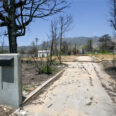
The Pasadena City Council voted Monday to deny a request to designate Roosevelt School as a historic landmark, concluding a lengthy and emotional public hearing that weighed the site’s mid-century architectural features against urgent calls for affordable housing.
The five-acre campus at 315 N. Pasadena Ave., originally built in 1953 with additions through 2014, was the subject of a September 2024 application by Pasadena resident Rene Gonzalez. Gonzalez argued the campus exemplified mid-century modern architecture with a distinctive “finger cluster.”
After an earlier application was not approved, a second application focused solely on architectural merit under Criterion C of the city’s landmark designation code.
But in a presentation on Monday, the applicant heavily emphasized the school’s social history and its legacy of inclusion and accessibility, which were not part of criterion up for vote.
Legal counsel for the school District argued the application inappropriately revisited historical and social elements already dismissed under a previous 2024 application, which was denied under all four landmark criteria.
“April, 2024 was the date of submission,” said Assistant City Attorney Caroline Monroy. “It was denied, it was not appealed and was not called up for review. At that point the application became final on criteria A, B and C. However the applicant can resubmit with new evidence or evidence of change circumstances. That original denial was with prejudice, it was final and therefore under the application today, criteria C is the criteria to be evaluated by the council because that is the only criteria on which new evidence was submitted.”
Gonzalez said he was giving the City “a gift” during his presentation.
“What you do with that gift, it’s up to you to open a window and look at this era from the 1950s. It’s a very painful but necessary,” he said.
The Pasadena Unified School District which owns the site, opposed the landmarking effort, arguing it would derail a proposed staff housing project and jeopardize millions in funding. Superintendent Elizabeth Blanco said the District’s housing initiative, aimed in part at helping staff displaced by the Eaton Fire, represents a “once-in-a-generation opportunity.”
According to Blanco, 120 members of the District’s staff lost their homes in the devastating Eaton Fire.
“We’re at the risk of losing great educators, not because they don’t want to stay here, but because they really can’t afford to stay here. So we do have a chance to transform Roosevelt into affordable homes for those who teach and work in Pasadena Unified School District and across California. Other school Districts have been able to do this successfully and it really does help with retention of educators and having the staff become true members of the community… I want to be clear that if this becomes a landmark, it will delay the project for years and also add millions of dollars to the cost and ultimately we’d be risking a once in a generation opportunity to address this crisis.”
While the city’s Historic Preservation Commission narrowly recommended designation in a 5-4 vote, city planning staff opposed the measure, citing major alterations that undermined the site’s original layout and design integrity. Covered walkways had been enclosed, courtyards eliminated, and key architectural features—such as glass entryways and sun-shading louvers—removed or modified, staff said.
In supporting the denial, several Councilmembers said the school no longer retained sufficient mid-century design elements to qualify under Criterion C. “The alterations—especially enclosing the open corridors—fundamentally changed the building’s character,” one member noted.
Supporters of landmark designation called the school a rare, inclusive facility that served special-needs children of diverse backgrounds during the 1950s, and cited Caltech’s local role in the polio vaccine as part of the school’s broader historical significance. Some preservationists argued the site could still be adaptively reused for housing while retaining its architectural legacy.
Ultimately, the council was constrained to evaluate only the building’s architectural merit.
“This is not a referendum on history, nor on the value of housing, but a quasi-judicial decision based solely on architectural integrity,” the city attorney clarified during deliberations.
Councilmember Jason Lyon encouraged the school District to honor the history of the site and the work done there in a time when people with physical and intellectual differences were often hidden away.
Mayor Victor Gordo encouraged Pasadena Unified School District to consider preserving historic character in future development efforts, pointing to the integration of older buildings in other city projects.














 2 comments
2 comments


